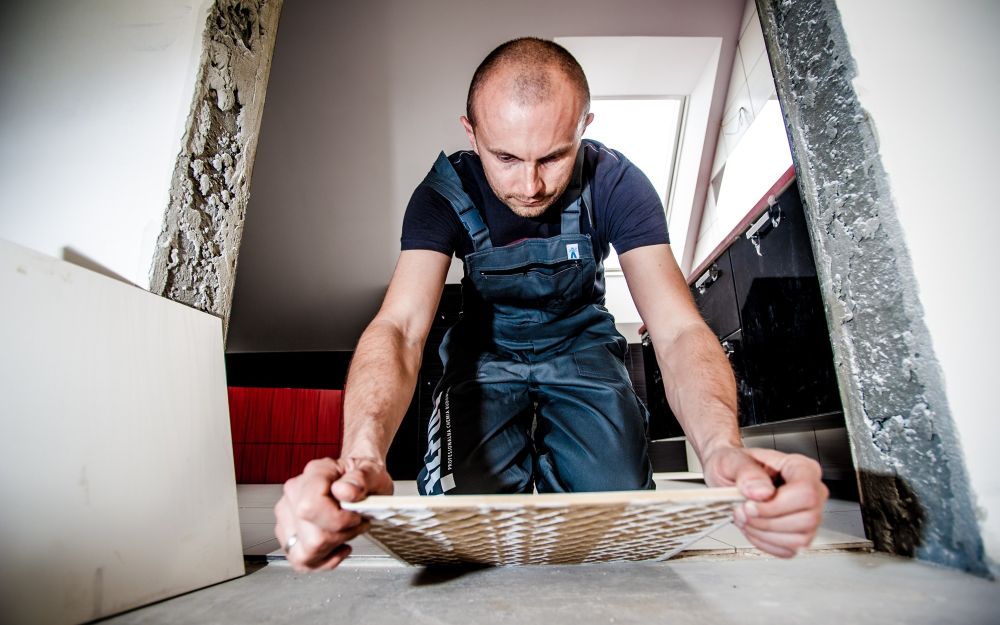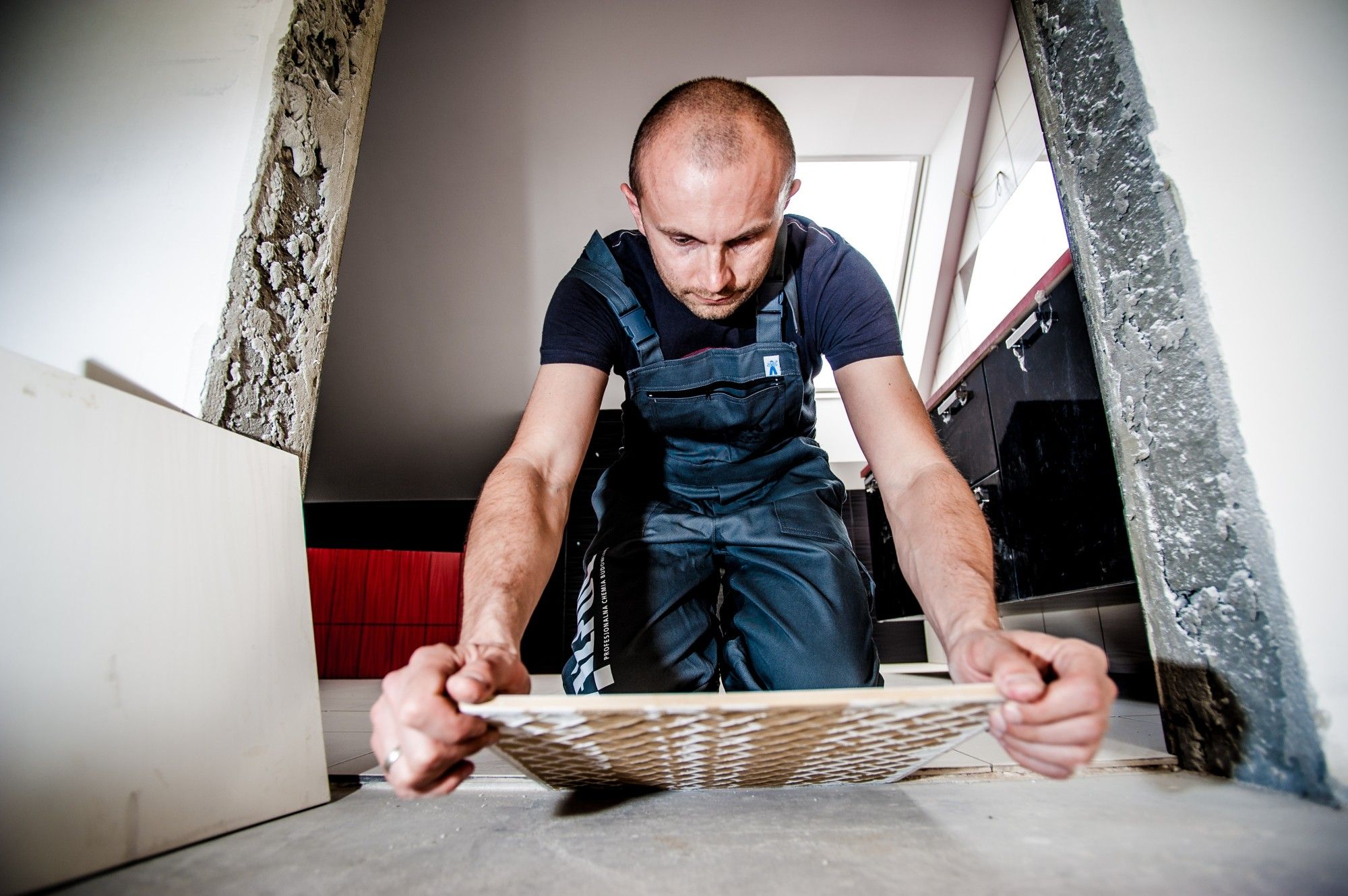
Did you know that approximately one-quarter of all homes will experience structural problems over their lifetime? The key is identifying and addressing these issues quickly. How to fix sloping floors will depend on the cause and its severity.
If you have sloping or sagging floors in your home, you may not have considered the cause. In fact, many people view uneven floors as a sign of character or charm in older homes and no reason to worry. However, you should not overlook this issue.
Sloping floors could have minor consequences, such as cosmetic damage and shifting doors. Also, anything you put in that space will lean, and flooring not being flush with the trim can be unsightly.
Uneven floors could also mean that the structure of your home is at risk. Left unchecked, structural issues could be dangerous. They could cause problems throughout your home, including cracked walls or windows and doors that will not close. If you are planning to sell your home, it will be difficult to do so with foundation issues left unaddressed.
Fortunately, there are processes you can follow to begin assessing the causes of your sloping floors. BAY Crawl Space & Foundation Repair offers comprehensive inspections to help homeowners figure out the causes of their uneven floors. If you have foundation problems, our contractors offer foundation and crawl space solutions that fit your situation and budget. Use the information below to help you get to the bottom of the problem. Keep reading to find out how to diagnose and correct your foundation issues.
What is the Difference Between a Sloping and a Sagging Floor?
A sloping floor and a sagging floor have common elements but different causes. A sloping floor usually means that the entire floor has a slant.
This slant may range from ½ inches to 2 inches for every 20 feet. While the floor itself may be flat, it will have this slant. A sagging floor means that the floor is generally level end-to-end. However, certain spots will have a sag or dip.
How Much Floor Slope is Acceptable?
Builders, engineers, insurance companies, and warranty companies all have their own set of numbers on what they consider an acceptable floor slope. Sometimes companies in legal cases will use higher slope numbers to avoid paying for liability or paying out insurance claims. Builders, however, may give lower numbers to factor in other home issues.
In general, if a floor slopes ½ inch to 1 inch for every 20 feet of the floor, it may require you to watch the situation, but it may not be a big concern. Sloping or sagging floors of more than 2 inches will indicate a problem.
Sometimes, original builders slope the floor to allow for drainage. A utility room or basement floor may slope to a drain in case a water heater leaks, or an attached garage floor may slope so water or chemicals from parked vehicles do not enter the home. In these instances, you will need to know the original slope and how much it has changed to determine if there is a foundation issue.
Keep in mind that a sloping or sagging floor is a warning sign of another issue that could involve the foundation. There may be other warning signs that could indicate structural problems. Some warning signs of structural damage and foundation problems may involve cracked foundations or concrete slabs. The walls or ceilings may also show cracks or the walls will slant in the home’s interior and exterior.
Soil creep is another warning sign. Soil creep involves the mass downward movement of soil. This slow movement may cause retaining walls to lean, fences to bend or topple over, or trees to tilt and curve. The yard may also have ridges or ripples along the soil.
Differential settlement involves only part of the foundation shifting or dropping. You may notice a side of the room that drastically drops at the corner. This issue is a serious foundation settlement problem that you should fix soon.
What Are Some Causes of Sloping Floors?
There are many different causes for sloping floors. These range from flooring or subflooring issues to more serious foundational ones.
Flooring and Subflooring Problems
One obvious cause of sloping floors is the floor support itself. Segments of the support structure can settle unevenly. Support piers can sink, while the wooden floor structure can bow, rot, and with enough damage, collapse.
If your crawl space is susceptible to moisture, you should install a solution beneath the floors to control the moisture. If not, it can fall victim to mold or even rot.
Issues With Floor Joists
An even more dire issue than flooring or subflooring is rot or damage to joists that support the floor. This can result from moisture or past flooding, or floor joists that were installed incorrectly. It could also be due to poor architectural design in older homes.
If you have a crawl space, you may see the joists sloping using a level. If they appear warped or damaged, it could be a strong sign that they are the culprit for the slanted floor and need repairs.
Wooden sills, which sit on the foundation walls and support the floor joists, are also susceptible to moisture and deterioration. These will be more complicated to replace than joists but can be done by elevating your entire home to remove and replace the sill.
You must address unstable joists or sills. Although less severe than issues with the foundation, it is a structural problem that can become bigger if overlooked.
Foundation Problems
One of the most common causes of sloping floors is foundation issues. This could be the foundation itself or poorly compressed ground underneath the flooring.
If this is the case, you may be able to see symptoms beyond sloping floors, like gaps between your foundation and baseboards or cracks in drywall. Doors or windows not opening is another sign of more widespread foundational unevenness.
Crawl Space Issues
Crawl spaces are particularly vulnerable to sinking since there is extra space that is not braced. Windows near a failing foundation will likely be affected.
Note that sloping due to settling or shifting of the foundation could be minor. Even resulting cracks in the walls, ceiling, or foundation can be easily fixed after foundation stabilization. Even if you see these things, it does not necessarily mean serious foundation issues.
However, if the foundation is compromised, you risk further damage. A damaged settling foundation can affect the whole building above.
What are the Benefits of Leveling a Sloped Floor?
Floor leveling addresses all the low spots and high points along the sloped floor. It provides structural integrity to the entire home. It is helpful to even out the subfloor before installing tile floors, hardwood flooring, or concrete slabs as your next DIY floor-covering project.
Leveling sloped floors also increases your home’s value. It helps avoid low bids from buyers who believe there are serious structural issues they will have to pay for after the purchase. Lastly, a level floor makes the room look beautiful.
How to Fix Sloping Floors
Step 1: Spot Uneven Areas of Flooring
You can use a carpenter’s level or a laser level to check for sloped floors. Lay the level down at different areas of the floor. See if the level lays flat or rocks in place. You can also use objects that roll, such as marbles. Drop the marbles and see if they roll in the same direction each time or settle in specific areas. You may discover sagging or sloped floors.
Step 2: Diagnose the Problem
You want to figure out the main cause of the uneven floor. If the reason is age-related settling, it is not something that usually causes future issues. You can use self-leveling underlayment when installing new floor coverings. If the foundation or other structural elements are causing problems, you will need to get it professionally repaired.
Step 3: Call a Foundation Repair Pro
Although it does not hurt to investigate the potential causes of sloping floors, the best course of action is to hire a professional. Many professionals offer free quotes, so it will cost you nothing to get an assessment of the problem and an estimate of the repair costs.
What Are My Options for Foundation Repair?
Flooring and Subflooring Replacement
Replacing flooring and subflooring can be expensive, depending on the extent of the project. It is a less serious issue than the other cause of slope, but you do not want to go forward with flooring repairs when you need to address an underlying issue. And, if it does happen to be an issue with the flooring or subflooring, then you can have the peace of mind that you have ruled out other issues.
If it is a flooring issue, go with a contractor experienced in removing and replacing subfloors. There are many risks to improperly repaired subfloors. Only hire an expert when fixing the critical structure of your home.
Wooden Structure Repair
Replacing joists or wooden sills is a little more complicated. Since these are structural supports, the house must be supported by temporary braces and jacks. This can be more labor-intensive and costly but may be a necessary solution to ensure the structural integrity of your home.
Also, crawl spaces are especially susceptible to moisture and mold, which can decay joists. So, in addition to replacing the structural supports, mold remediation, crawl space encapsulation, or dehumidifying equipment may be necessary to prevent future issues.
This is a more complex project than flooring or subflooring replacement. And it could exist alongside other foundational issues. Depending on the extent of the damage and decay, replacing these structural supports can involve lifting the house.
Foundation and Crawl Space Repair
Foundation and crawl space structural repair is the most in-depth and costly of these solutions. It will generally be more labor-intensive. There are a range of fixes for faulty foundations, as well as associated costs.
Foundation reinforcement is one avenue for fixing sloping floors. This can be accomplished without replacing much or any of the original foundational structure of the home but involves installing steel piers or other supports. It could also entail installing new foundation footers to support the floor structure.
Foundation repair could very well require jacking up the home to do the work properly. This is a complex endeavor, but one that may not be as disruptive as you might think. You may not even have to leave your home while the work is underway.
However, it often involves bracing the structure during repairs. It could also require landscaping repairs after the foundation repairs are complete.
Foundation repair is a serious endeavor and requires particular expertise and experience. In general, to fix an uneven foundation, you must support the lower portion.
Foundation repair can be costly, so it is important to find the right contractor to do the work. For such a significant investment, you will want to ensure that whoever is doing the work will do a good job.
Increase the Life and Value of Your Home
Now that you know some of the causes of sloping floors, you can begin putting together a plan on how to address the problem. Although causes and associated solutions range, remember that it will most likely cost you nothing to get an assessment. It is the first step towards getting your sloped floor fixed. Repairing your foundation increases the lifespan of your home, adding beauty and value.
BAY Crawl Space & Foundation Repair serves homes in the greater Hampton Roads area. We offer competitive pricing and even financing for major projects. We also do our best to minimize disruptions to your daily life.
We provide free foundation repair analysis and suggested solutions. Our expert advisors can provide you with a free quote, so you have a helpful resource with BAY Crawl Space & Foundation Repair.



